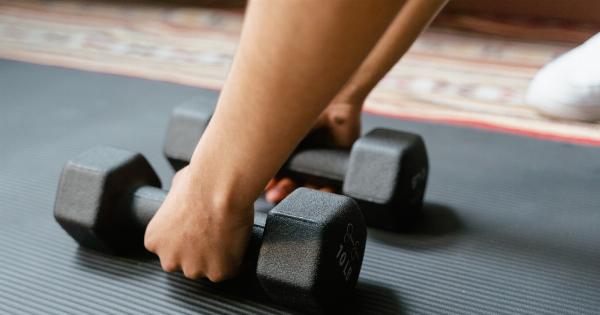Stroke, a condition in which the blood supply to the brain is disrupted, is one of the leading causes of death and disability worldwide. It is crucial to take preventive measures to ensure a stroke-free life.
While factors such as genetics and age play a role, incorporating regular physical activity into your routine can significantly reduce the risk of stroke. In this article, we will explore seven movements that can help you lead a stroke-free life.
1. Walking
Walking is a simple yet effective form of exercise that can contribute to a stroke-free life. Gradually increase your walking duration and intensity to enjoy its many benefits.
Walking not only improves cardiovascular health but also enhances blood circulation, reducing the risk of stroke. Aim for at least 30 minutes of brisk walking daily to reap the rewards.
2. Swimming
Swimming is a low-impact exercise that works out multiple muscle groups simultaneously. It is especially beneficial for individuals with joint problems or limited mobility.
Swimming helps in maintaining a healthy weight, improving heart health, and boosting overall fitness. By engaging in regular swimming sessions, you can reduce the likelihood of a stroke.
3. Cycling
Cycling is an excellent way to strengthen your cardiovascular system while minimizing stress on your joints. It enhances endurance, increases stamina, and improves overall fitness levels.
By incorporating cycling into your routine, you can reduce the risk of stroke while enjoying the great outdoors. Aim for 30 minutes to an hour of cycling three to five times a week.
4. Yoga
Yoga combines physical postures, breathing exercises, and meditation to promote holistic well-being. Regular practice of yoga improves flexibility, reduces stress, and enhances blood circulation.
Certain yoga poses, like the downward dog and the triangle pose, can specifically target the prevention of strokes. Consider joining a yoga class or following online tutorials to incorporate this ancient practice into your routine.
5. Strength Training
Strength training exercises, such as weightlifting or resistance band workouts, help build muscle and increase bone density.
Engaging in strength training exercises at least twice a week can not only improve your physical appearance but also promote heart health. Strong muscles can reduce the risk of stroke and assist in the management of other chronic conditions.
6. High-Intensity Interval Training (HIIT)
HIIT is a form of exercise that involves short bursts of intense physical activity followed by brief recovery periods. This training method helps improve cardiovascular fitness, burn calories, and reduce the risk of stroke.
Incorporate HIIT workouts into your routine, such as sprinting intervals or circuit training, to optimize your efforts in preventing strokes.
7. Tai Chi
Tai Chi is a Chinese martial art that combines slow, flowing movements with deep breathing and mental focus. Regular practice of Tai Chi promotes balance, flexibility, and relaxation.
It improves blood flow and reduces stress levels, lowering the risk of stroke. Consider joining a Tai Chi class to learn this ancient practice and nurture a stroke-free life.
Conclusion
Incorporating these seven movements into your lifestyle can significantly reduce the risk of stroke and contribute to better overall health.
By engaging in activities such as walking, swimming, cycling, yoga, strength training, HIIT, and Tai Chi, you can protect yourself from the devastating effects of strokes. Remember to consult with your healthcare provider before starting any exercise program and gradually increase the intensity of your workouts. Prioritize your well-being and take proactive steps towards a stroke-free life.





























